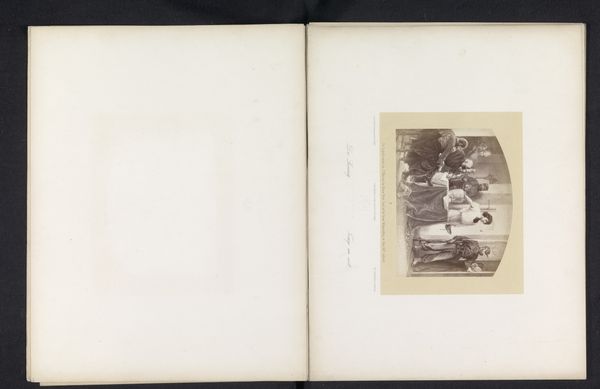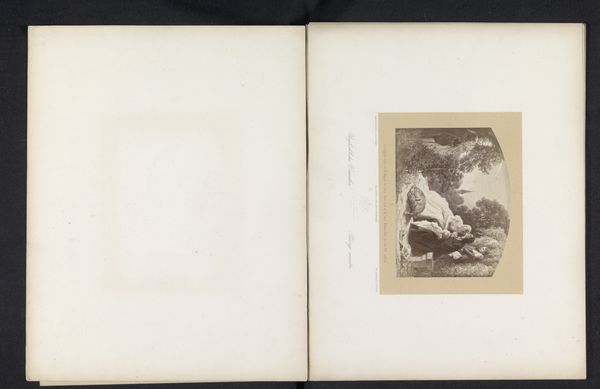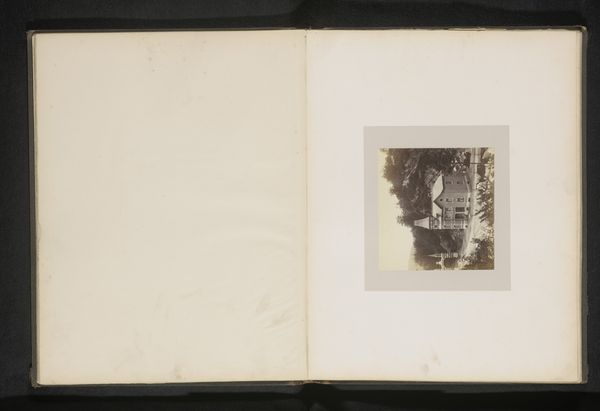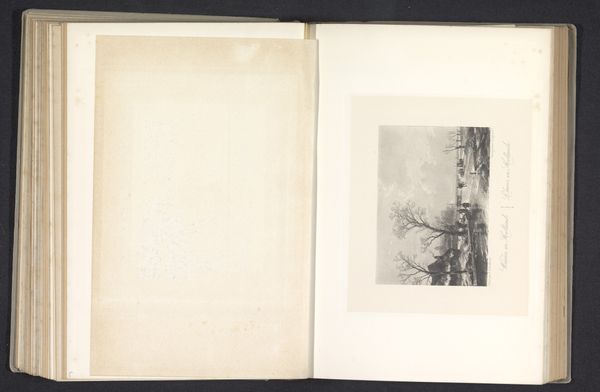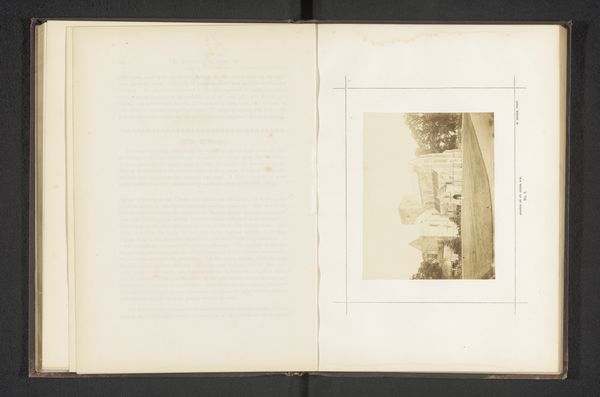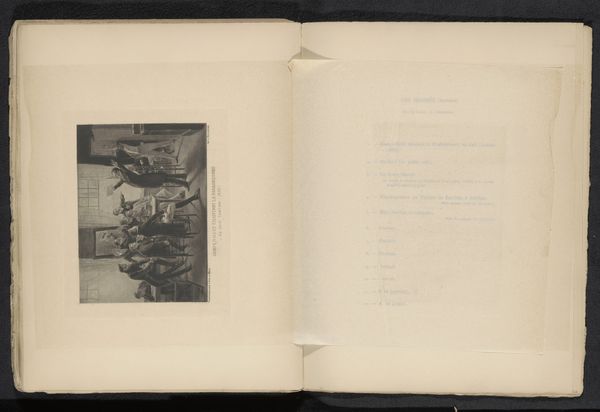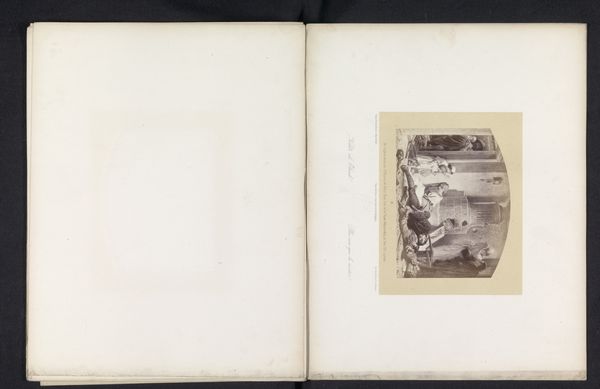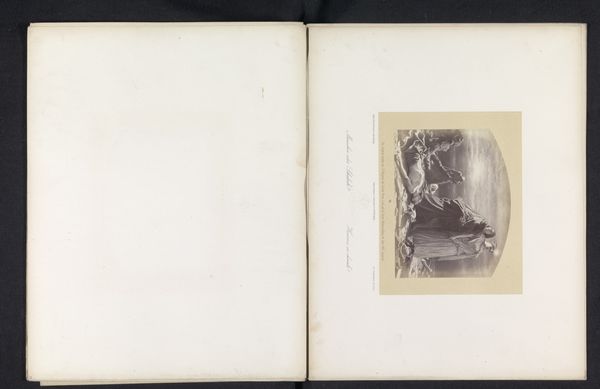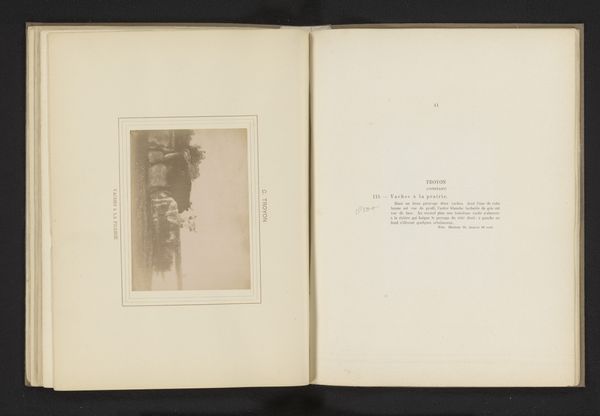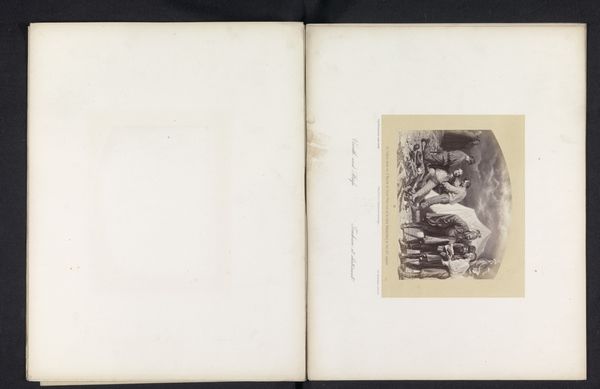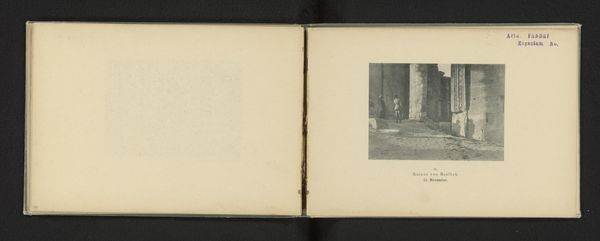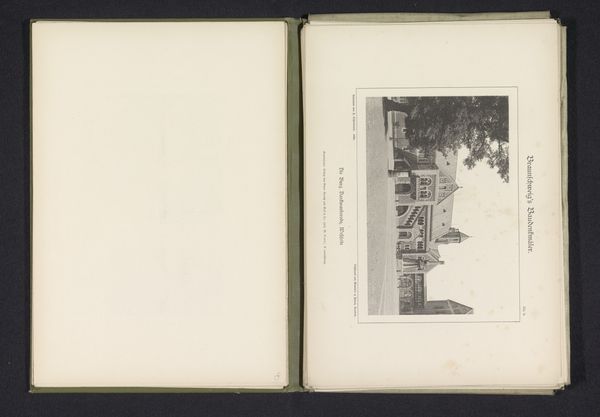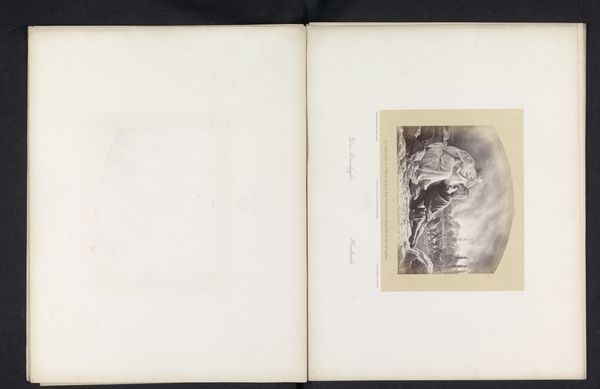
Fotoreproductie van een tekening van een soldaat die vanaf zijn paard afscheid neemt van een vrouw met een kind in haar armen before 1868
0:00
0:00
Dimensions: height 115 mm, width 147 mm
Copyright: Rijks Museum: Open Domain
Curator: Here we have a fascinating reproduction of a drawing. It is titled "Fotoreproductie van een tekening van een soldaat die vanaf zijn paard afscheid neemt van een vrouw met een kind in haar armen"—quite a mouthful, I know—and predates 1868. Ludwig Angerer is credited as the photographer. Editor: Immediately, the melancholy of departure strikes me. The soft sepia tones and the slightly blurred quality of the image create an atmosphere of nostalgia, as if we are viewing a memory. Curator: Precisely. Angerer worked during a period when photography was still finding its footing as both a scientific tool and an art form. Consider that this is a photographic reproduction of a drawing; there’s an interesting layer of mediation at play here. This layering prompts questions about authenticity and representation in the arts at the time. Editor: I think that framing, of photography reproducing an existing work, makes a clear statement about its own role, or perceived role, in the 19th century art world. But I’m also interested in the politics of the image. We see the archetype of the departing soldier, the woman left behind – how does this image serve, perhaps, to reinforce societal roles, ideals of patriotism, and the emotional burden placed on women during times of conflict? Curator: That is a critical reading. Romanticism idealized such sacrifices for king and country, and photography certainly became a tool for disseminating such ideas to a broader public. Yet, the photograph doesn't quite glorify. It’s staged, a bit stilted, but captures an intimate human moment that speaks to the human cost of war beyond political ideals. Editor: And that tension is what makes the artwork resonate. It exists in a liminal space, romanticizing loss but still hinting at very real grief and displacement caused by patriarchal systems. Curator: Looking closely allows us to observe and interpret that interplay and negotiation in an older piece—between the social roles reinforced and the human feelings the work evokes. Editor: Absolutely. There is plenty to contemplate here beyond the image at face value.
Comments
No comments
Be the first to comment and join the conversation on the ultimate creative platform.
